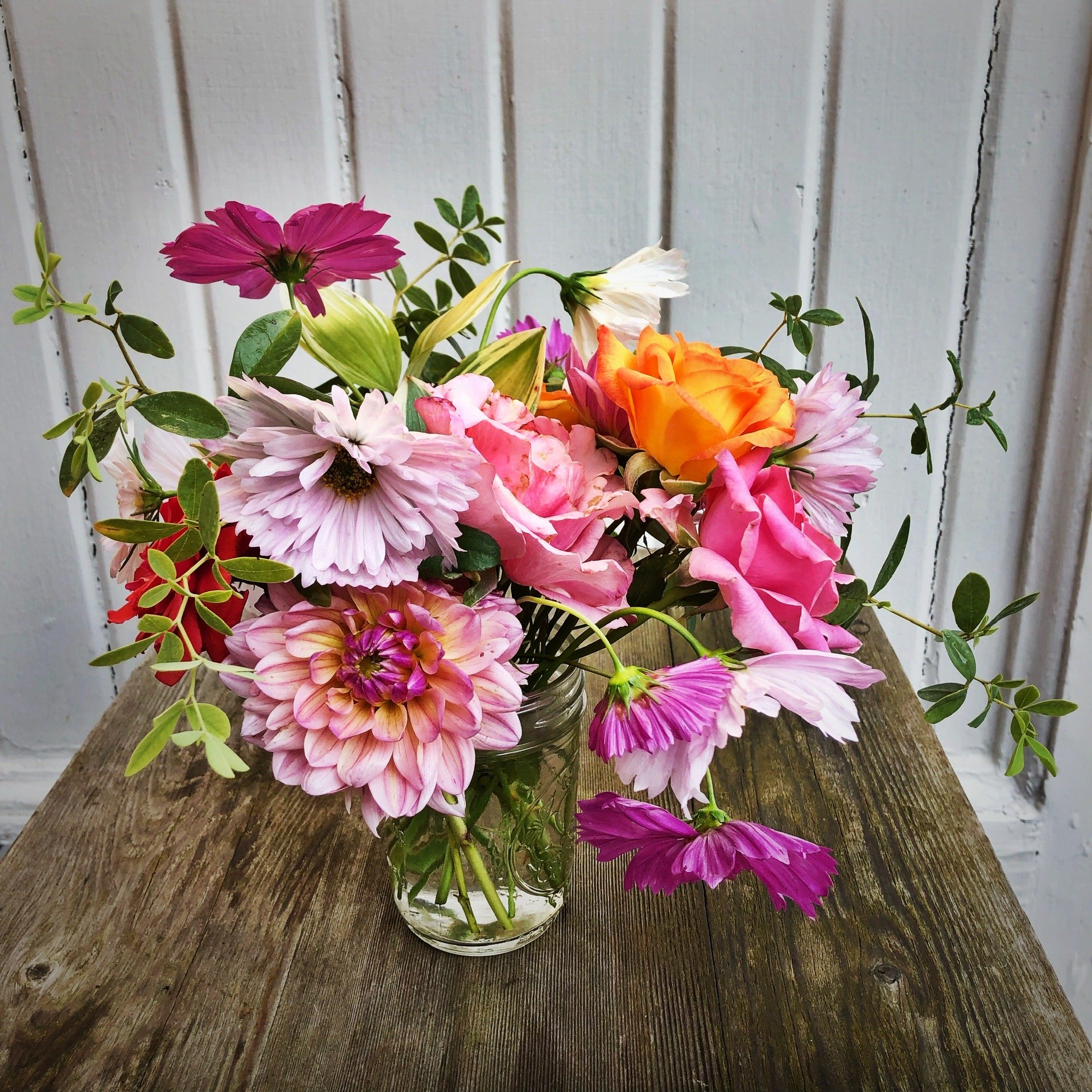Welcome, and the Why…
Welcome to the first blog post of Bloom & Bounty!
I hope to use this long-form space to provide detailed tutorials, to answer gardening questions I often receive in a more thorough way than social media can provide, and to show you what’s unfolding in our gardens month by month.
But to begin, I thought I would answer a question that may be on your minds. And trust me, I’m as sick as the next person of the moralizing world we live in, and virtue-signaling isn’t my intent with this post. But in the many years I have been gardening and the five years I have been growing from seed, I have learned just how special- & rare- real flowers really are. My eyes have been opened, and I’d love to share what I’ve learned.
Why buy local flowers?
It's a fair question, and with Americans buying more bouquets than Big Macs annually (true!), it's a question worth thinking about.
While there are numerous books written about the big business of flowers, I'll highlight what I consider to be the top three most compelling reasons to consider buying locally:
Local flowers can be a significantly less expensive alternative to conventionally-grown blooms.
Mass-produced flowers are an enormous industry, generating somewhere in the neighborhood of 40 billion dollars annually, with 80% of the flowers sold in the United States flown in trans-continentally from South America or Europe. As I heard somewhere, flowers today may be better-traveled than the people who buy them!
All of this comes with a hidden cost, of course, and guess who pays? Make no mistake about it- that cost is levied on both the consumer (in terms of outright cost) and the environment (in terms of carbon footprint & use of resources) in substantial ways. Sourcing your flowers locally is a small thing- but a step that will prove a savings for your wallet, and also reduces the amount of money spent on jet fuel, refrigeration costs, chemicals & the like.
It is, quite frankly, a luxury to have red roses on Valentine's Day, or sweet peas in your December bridal bouquet, and the underbelly of this "nature-meets-capitalism" industry is starting to dawn on people when they realize it wasn't always this way, and further, that it doesn't have to be forever.
Local flowers are incomparably fresher.
Flowers, like food, are perishable. So how do they make it through a multi-week holding process from day of harvest to your local grocery store or florist alive? Several ways:
One- for centuries, geneticists and hybridizers have been tinkering with Mother Nature, breeding flower varieties that, for example, don't have scent (an unnecessary expenditure of energy when there are no pollinators to visit) or that grow to unnatural heights (tall event vases call for tall stems). While I can extol the virtues of a pollen-free sunflower along with the next person, it seemsse to me that something real and human is given up when technology oversteps its bounds into the natural world. Should we care that roses have lost their scent? Was that an inherent part of their beauty or a nuisance to be eliminated? To me, the difference in freshness (and dare I say "realness") is analogous to biting into a farm-fresh strawberry in June versus a green-house grown December fruit. One I can live without. The other is pure heaven.
Two- mass-produced flowers are drenched in chemicals & pesticides. Some of these chemicals allow the plant to go days without water, which is convenient when the flower has to go from greenhouse to airplane, from airplane to truck-bed, from truck to cooler, and from cooler to florist...all before gracing your kitchen table. Local flowers, on the other hand, have usually never met a cooler, and were harvested sometimes just a matter of hours prior to purchase, making them the winner of the shelf-life competition.
Local flowers are art.
And like all good art, they rarely behave. Local flowers are not the uniform soldiers of your typical florist's bucket of stems- which are tame, predictable, and uninspiring. Local flowers are whimsical & romantic- bending toward the sun here, or perfuming a room in such a way that you're transported to another time and place.
Local flowers- real flowers, of which no two are the exact same- communicate rarity, uniqueness, a one-of-a-kind experience, which is something that human beings crave and is getting harder to find by the day. Sure, you give some things up when you buy from a local grower, as you can't point to a picture on a screen and order "the Audrey" or "the Rebecca" arrangement. A local grower can work with your color palette, but she can never promise you a certain flower, as she's not ultimately in control of her garden- Mother Nature is. But do we really want that bouquet from a national wire service that is indistinguishable from an arrangement delivered from Boston to Bozeman? I don't. I prefer the fickleness, the seasonality, & the personality found in local flowers, just as I prefer the nutrition found in local food, or the regional identity found in local architecture.
I could go on, but hopefully I've given you something to consider the next time you're tempted to grab that impulse bouquet from Trader Joe's during the growing season. I'm not asking you to stop. I'm just asking you to remember that there are worthy alternatives.
Thanks for reading, and following along!

